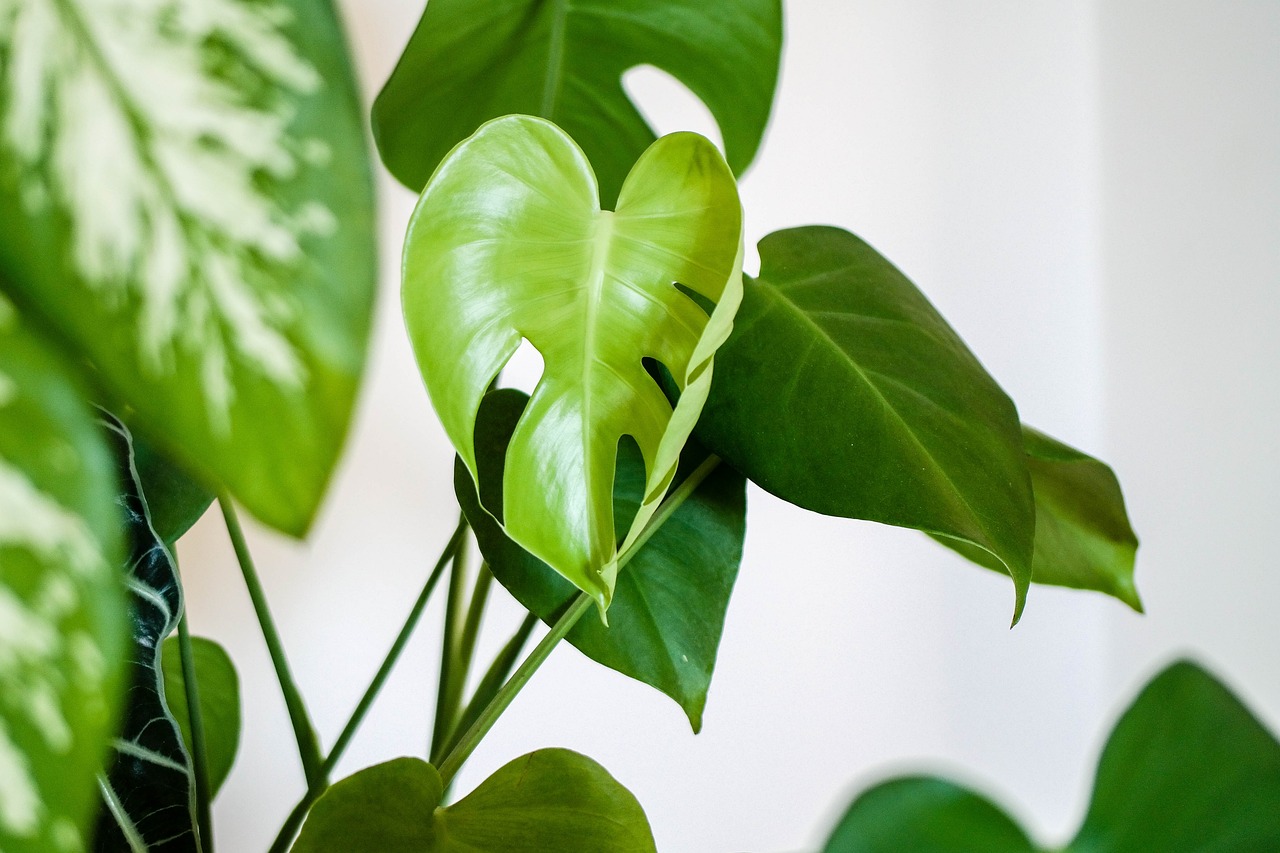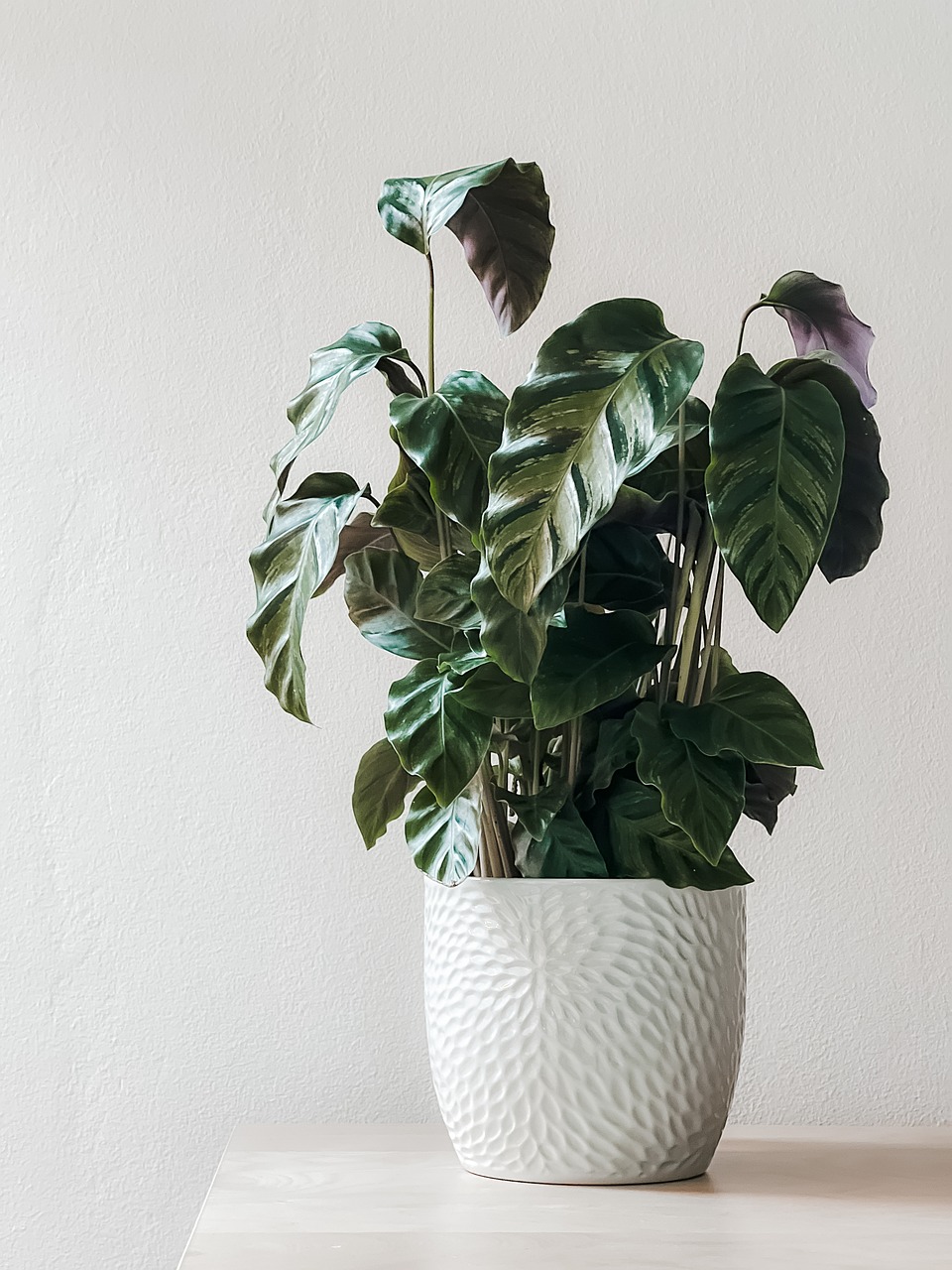Houseplants are not only beautiful additions to our homes but also powerful allies in improving indoor air quality. Certain plants possess the unique ability to purify the air by filtering out harmful toxins and pollutants. Discover which houseplants can transform your living space into a healthier environment.
The concept of using plants for air purification gained popularity after a study by NASA in the late 1980s. This research aimed to explore ways to improve air quality in space stations and found that various houseplants could effectively remove indoor air pollutants. These findings have since inspired many people to incorporate greenery into their homes for better health and well-being.

Indoor air pollution can come from multiple sources, including chemicals in household products, furniture, and even building materials. Common pollutants include formaldehyde, benzene, and carbon monoxide. While ventilation can help reduce these toxins, houseplants offer a natural and aesthetically pleasing solution to enhance air quality.
Air-Purifying Houseplants
Each plant has its unique strengths when it comes to cleaning the air. Some are particularly effective at removing specific toxins, while others provide general air purification benefits. Here are some of the top houseplants known for their air-cleaning abilities:
- Spider Plant: This hardy plant is known for its ease of care and ability to remove formaldehyde and xylene from the air.
- Pothos: Also called devil’s ivy, pothos can filter out formaldehyde, benzene, and carbon monoxide.
- Peace Lily: This elegant flowering plant not only adds beauty but is also effective against ammonia, benzene, and formaldehyde.
- Snake Plant: Known for its resilience, the snake plant converts CO2 into oxygen at night, making it a great bedroom addition.
- Boston Fern: This lush fern thrives in humid conditions and is excellent at removing formaldehyde and other pollutants.
These plants not only improve air quality but also contribute to a more relaxing and inviting atmosphere in your home. Incorporating them into your living space can help create a healthier environment for you and your family.
| Plant Name | Air Pollutants Removed | Care Level |
|---|---|---|
| Spider Plant | Formaldehyde, Xylene | Easy |
| Pothos | Formaldehyde, Benzene, Carbon Monoxide | Easy |
| Peace Lily | Ammonia, Benzene, Formaldehyde | Moderate |
| Snake Plant | CO2, Formaldehyde | Easy |
| Boston Fern | Formaldehyde, Other Pollutants | Moderate |
Choosing the right plants for your home can significantly enhance your indoor environment. By selecting a variety of these air-purifying plants, you can enjoy the dual benefits of improved air quality and a touch of nature’s beauty indoors. As you explore options for incorporating these plants into your space, consider factors such as light availability and care requirements to ensure they thrive in your home.
In addition to their air-purifying benefits, houseplants can also improve mental well-being. Studies have shown that being around greenery can reduce stress levels and promote a sense of calm. Thus, adding a few of these beneficial plants to your living space is an excellent investment in your health.
How Houseplants Purify the Air
Understanding how houseplants purify the air helps appreciate their value beyond just aesthetics. Plants utilize a process known as photosynthesis to convert carbon dioxide into oxygen, which is crucial for maintaining a healthy atmosphere indoors. Additionally, they can absorb harmful substances through their leaves and roots, effectively filtering out pollutants from the air.
The main mechanisms through which houseplants purify the air include:
- Photosynthesis: During this process, plants take in carbon dioxide and release oxygen. This natural exchange helps to improve air quality.
- Transpiration: Plants release moisture into the air through tiny openings in their leaves. This process not only adds humidity but also helps in cooling the environment.
- Absorption of Toxins: Many houseplants can absorb harmful chemicals like formaldehyde, benzene, and trichloroethylene through their leaves and roots, breaking them down into harmless substances.
The Best Conditions for Air-Purifying Plants

To maximize the air-purifying benefits of houseplants, it is essential to provide the right conditions for their growth. Here are some key factors to consider:
- Light Requirements: Different plants have varying light needs. Some thrive in bright, indirect sunlight, while others prefer low light conditions. Understanding these requirements will ensure your plants flourish and continue to purify the air effectively.
- Watering Needs: Overwatering can lead to root rot, while underwatering can stress the plant. It is important to learn the specific watering needs of each houseplant you choose.
- Humidity Levels: Some plants, like ferns, require higher humidity levels to thrive. Consider using a humidifier or grouping plants together to create a microclimate that supports their growth.
- Soil Type: Use appropriate potting soil that provides good drainage while retaining some moisture. This will help maintain healthy roots and overall plant health.
Combining Houseplants for Enhanced Benefits

Incorporating a variety of houseplants can significantly enhance air purification. Different species target different pollutants, so mixing plants can create a more comprehensive air-cleaning solution. Here are some combinations that work well together:
- Pothos and Snake Plant: This combination is effective for removing formaldehyde and CO2 while being low-maintenance.
- Peace Lily and Boston Fern: Together, they tackle ammonia and mold spores, making them great choices for bathrooms or kitchens.
- Spider Plant with Aloe Vera: Spider plants filter out a range of toxins while Aloe Vera adds an extra layer of air purification and provides soothing gel for minor burns and cuts.
When arranging these plants in your home, consider placing them in areas where you spend the most time, such as living rooms or bedrooms. This strategic placement not only boosts air quality but also enhances your space’s visual appeal.
Maintaining Your Indoor Jungle
Caring for houseplants is essential to ensure they continue to purify the air effectively. Regular maintenance includes tasks such as watering, pruning, and inspecting for pests. Here are some tips to keep your indoor jungle thriving:
- Regular Watering: Check the soil moisture regularly and water when needed. Use pots with drainage holes to prevent waterlogging.
- Dusting Leaves: Dust can accumulate on leaves, hindering photosynthesis. Wipe leaves with a damp cloth periodically to keep them clean.
- Pest Management: Keep an eye out for common pests like spider mites or aphids. Natural remedies like neem oil can help control infestations without harming the plants.
By understanding how to care for your air-purifying plants, you will ensure they thrive and continue to provide clean air for your home. Embracing this green lifestyle not only benefits your health but also brings a refreshing vibrancy to your living environment.

Common Indoor Air Pollutants
Before diving deeper into houseplants, it is essential to understand the common indoor air pollutants that these plants can help eliminate. Awareness of these pollutants can guide you in selecting the most effective plants for your specific needs. Here are some of the most prevalent indoor air contaminants:
- Formaldehyde: A common chemical found in building materials, furniture, and household products. Exposure can lead to irritation of the eyes, nose, and throat.
- Benzene: Often present in plastics, tobacco smoke, and some detergents. Prolonged exposure is linked to harmful health effects.
- Carbon Monoxide: A colorless, odorless gas produced by burning fossil fuels. It can be particularly dangerous in poorly ventilated areas.
- Trichloroethylene: Found in adhesives, paint removers, and spot removers. This compound can have adverse effects on the central nervous system.
- Ammonia: Commonly found in cleaning products and fertilizers. High concentrations can irritate the skin, eyes, and respiratory system.
How Houseplants Combat Pollution
Houseplants effectively combat indoor pollution through various biological processes. Each plant has unique capabilities for filtering specific pollutants. Below is a closer look at how selected houseplants tackle these air contaminants:
- Spider Plant: This resilient plant is known to absorb formaldehyde and xylene, making it a fantastic choice for homes with synthetic furnishings.
- Pothos: Highly effective at removing formaldehyde, benzene, and carbon monoxide, pothos is a practical option for various indoor environments.
- Peace Lily: In addition to being beautiful, peace lilies are adept at filtering out ammonia, benzene, and formaldehyde from the air.
- Snake Plant: This hardy plant converts CO2 into oxygen at night, making it suitable for bedrooms while also filtering out formaldehyde.
- Boston Fern: Known for its ability to remove formaldehyde and other toxins, this fern thrives in humid conditions, making it ideal for bathrooms.
The Science Behind Air Purification
The science behind how houseplants purify the air involves several biological mechanisms. Understanding these mechanisms can deepen your appreciation for your green companions:
- Biofiltration: Plants absorb pollutants through their leaves and roots. Microorganisms in the soil also play a critical role by breaking down these toxins into harmless substances.
- Volatile Organic Compounds (VOCs) Absorption: Many houseplants have specialized cells that can absorb VOCs directly through their stomata (small openings on leaves).
- Soil Microbial Activity: The microbial community in the soil enhances the breakdown of pollutants. Healthy soil supports beneficial bacteria that help detoxify harmful substances.
The Best Placement for Maximum Impact
To ensure your houseplants are effectively purifying the air, strategic placement is crucial. Here are some tips on where to position them for maximum impact:
- High-Traffic Areas: Place plants in living rooms or hallways where people gather to benefit from their air-cleaning properties.
- Bedrooms: Position oxygen-producing plants like snake plants near your bed to improve air quality while you sleep.
- Kitchens: Use plants such as peace lilies or spider plants to help filter out cooking odors and chemicals from cleaning products.
- Bathrooms: Boston ferns thrive in humidity and can purify the air while adding a touch of greenery to your bathroom decor.
Selecting the right plants and placing them strategically throughout your home will create a healthier indoor environment. The combination of natural beauty and air purification makes houseplants an essential addition to any living space.
Integrating Houseplants into Your Lifestyle
Incorporating air-purifying houseplants into your home is not just about aesthetics; it is a lifestyle choice that promotes well-being and health. Beyond their air-cleaning abilities, houseplants bring a sense of tranquility and connection to nature. They can transform any space, making it more inviting and nurturing.
Here are some tips to seamlessly integrate houseplants into your daily life:
- Create a Plant Care Schedule: Set reminders for watering, dusting, and checking for pests. This will help you maintain healthy plants and ensure they continue to purify the air effectively.
- Experiment with Plant Arrangements: Don’t hesitate to play with different plant combinations and arrangements. Mixing various species can create a vibrant display while maximizing air purification benefits.
- Use Decorative Pots: Choose aesthetically pleasing pots that complement your home decor. Attractive containers can enhance the visual appeal of your plants.
- Educate Yourself: Learn about the specific needs of each plant species you own. Understanding their requirements will help you create an optimal environment for growth.
Houseplants as Gifts
Houseplants make excellent gifts for friends and family. They symbolize growth and care, making them perfect for various occasions such as housewarmings, birthdays, or even as thoughtful gestures during difficult times. Consider giving a plant along with a personalized note about its air-purifying benefits, or share tips on how to care for it.
Some popular houseplants for gifting include:
- Succulents: Low-maintenance and trendy, succulents are perfect for beginners.
- Peace Lilies: Their beautiful blooms and air-purifying qualities make them a lovely gift.
- Spider Plants: These resilient plants are easy to propagate, allowing the recipient to share new plants later on.
Caring for Houseplants: A Lifelong Journey
Caring for houseplants is a rewarding journey that requires patience and commitment. As plants grow, they often require repotting or additional care. This ongoing relationship can deepen your appreciation for nature and foster mindfulness in your daily routine.
Sharing your experiences with houseplants can also build community connections. You can join local gardening clubs or online forums to exchange tips, plant cuttings, and stories about your green companions.
Final Thoughts
Houseplants are more than just decorative elements; they are vital contributors to a healthier indoor environment. By choosing the right plants, understanding their care requirements, and strategically placing them in your home, you can significantly improve air quality. The benefits extend beyond physical health, promoting mental well-being as well.
As you embark on your journey with houseplants, remember that each plant has its unique characteristics and qualities. Embrace the learning process, and enjoy the vibrant life that houseplants bring to your space. With each new addition, you are not only enhancing your surroundings but also taking an active step toward a healthier lifestyle.
Incorporating air-purifying plants into your home is an investment in both beauty and wellness. With the right knowledge and care, these green companions can thrive, making your indoor environment a sanctuary of fresh air and serenity.
